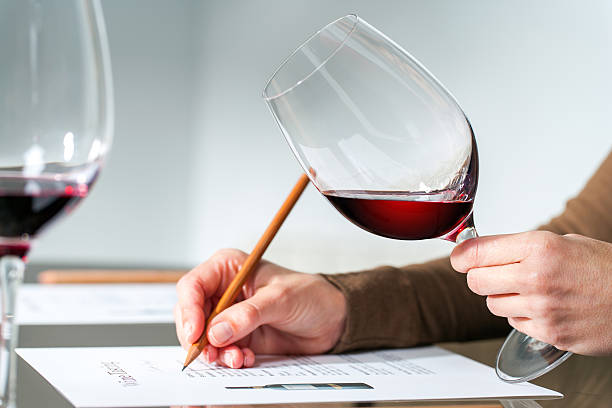The Match of a Lifetime
Wine and chocolate. These two indulgent delicacies represent decadence and self-indulgence for many. These two seemingly pleasant culinary experiences can often clash, leading to disappointment.
We have paired six wines we are familiar with and created a chocolate pairing guide to help you avoid this. This guide offers helpful tips to help you choose the right chocolate style for you.
Let’s examine the science behind wine and chocolate. Wine and chocolate both contain flavanols (Galvan-3o). Flavanols, also known as antioxidants, are more common. Flavanols are also responsible for tannin. Wine lovers refer to this as the wine’s level of astringency. This is the science part – foods high in flavanols can clash, making the other taste bitter or astringent.
It’s all about balance, as with most things in life. It isn’t balanced to drink a Cabernet Sauvignon high in tannins with a piece of dark chocolate. Flavanols are high in bitterness, which can lead to sensory overload.
It is easy to balance wine and chocolate. The wine should have more residual sugar or fruitier chocolate than it has. You can also match sweeter wines, such as port, with higher cocoa percentages. Truffles made with 70% dark chocolate and port are divine.
Delatite Estate Pinot Noir and White chocolate
This pairing is a surprising choice, but it’s a great match. White chocolate is often not considered chocolate because it contains very little cocoa. Some high-quality chocolate producers may use cocoa butter to make their white chocolate. This match is so delicious; we decided to call it chocolate. We won’t let technicalities stop us from enjoying a delicious match.
White chocolate’s fat will amplify the sweet fruit flavors of Pinot Noir, which are usually strawberry, red cherry, and raspberry. This match will be even more exquisite if you add white chocolate to strawberries that have been frozen or fresh.
Flametree Shiraz & Milk Chocolate
Milk chocolates work well with wine, generally speaking. This is due to the presence of cream and other fats. These fats are like tiny delivery vessels that carry the fruitier flavors of the wine to your mouth.
The Flametree 2015 Margaret River Shiraz red is bold and soft. It is fruit-driven but balanced with soft, velvety tannins. This wine is strong and is great with a ganache truffle or soft-centered chocolate ball.
Stella Bella Cabernet Sauvignon Merlot & Milk Chocolate/ Dark Chocolate
The suggestion of Cabernet Sauvignon mixed with dark chocolate is a common mistake. A blend of Merlot and Cabernet Sauvignon is an exception to the rule. Merlot, a powerful, fruit-driven varietal, can be paired with Cabernet to make milk chocolate or 50% – 60% dark chocolate.
This wine can be paired with milk, dark or mixed chocolate bars, dried fruits, and nuts.
Amelia Park Frankland River Shiraz & Milk Chocolate
This Shiraz, a rich Shiraz from West Australia’s Frankland River, is perfect to pair with milk chocolate. The wine has a natural aroma of chocolate and cherry, and its palate is full of deep blue and blackberry fruits and silky tannin.
This is a great choice for making a block of pure milk chocolate or fondue with strawberries.
Evoi Wines Cabernet Sauvignon and Milk Chocolate Mints
This wine is often high in tannins, making it difficult to pair with chocolate. Straight Cabernet Sauvignon rarely appears on chocolate pairing lists.
The 2014 Envoi Wines Cabernet Sauvignon has an aroma of chocolate and a rich, plum-driven, blueberry-driven taste. The wine has a natural spiciness, which would be incompatible with most types of chocolate. This wine is delicious when paired with chocolate-covered mints.
Hungerford Hill Pinot Meunier & White Chocolate
Although less well-known than Pinot Noir, Pinot Meunier has similar flavors and bodies. This light-bodied wine has subtle Morello Cherry flavors and delicate spiciness.
Pinot Meunier pairs well with white chocolate. The chocolate’s fat brings out the wine’s subtle fruit flavors while not overwhelming. This wine would go well with white chocolate-covered raspberries.




